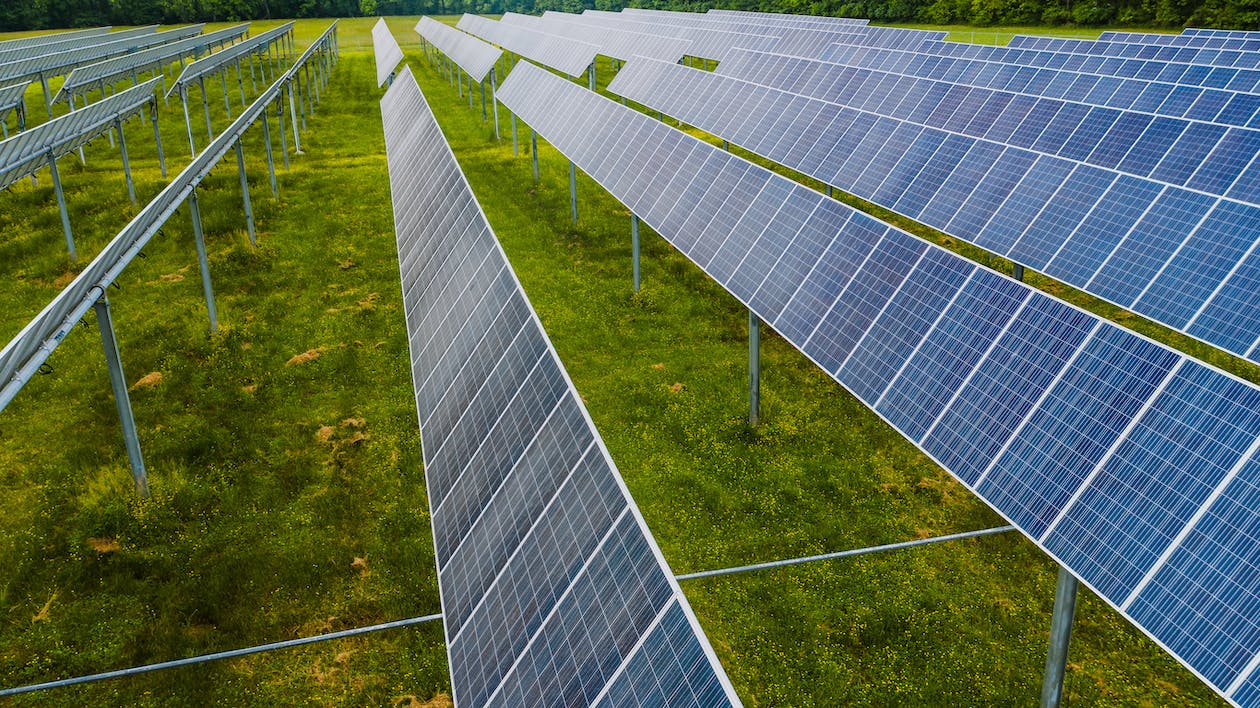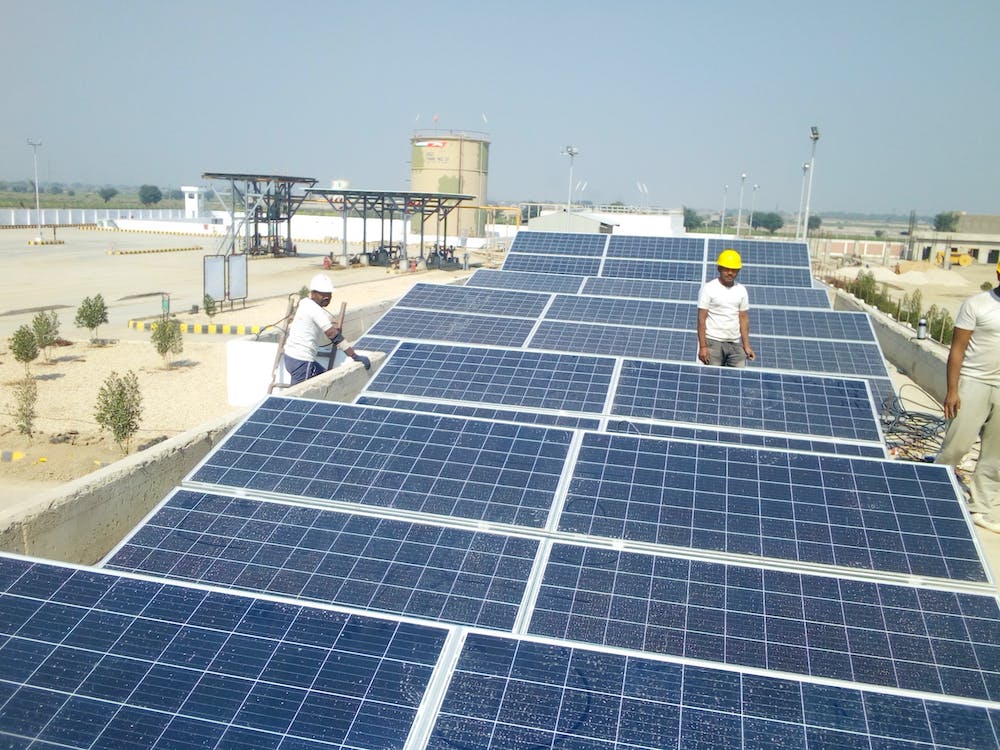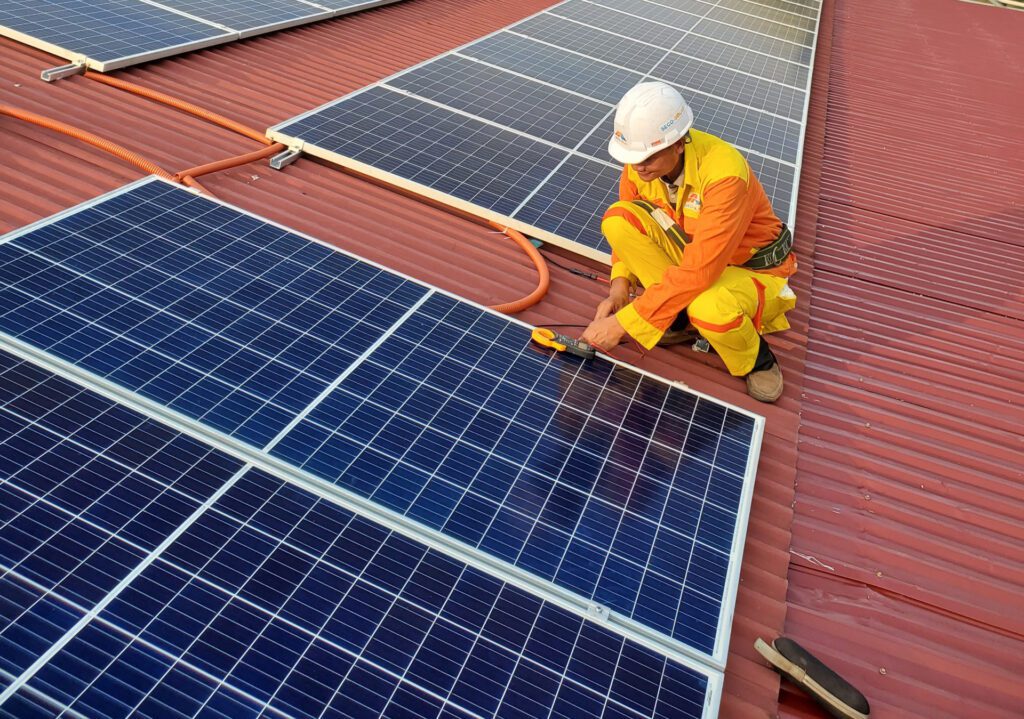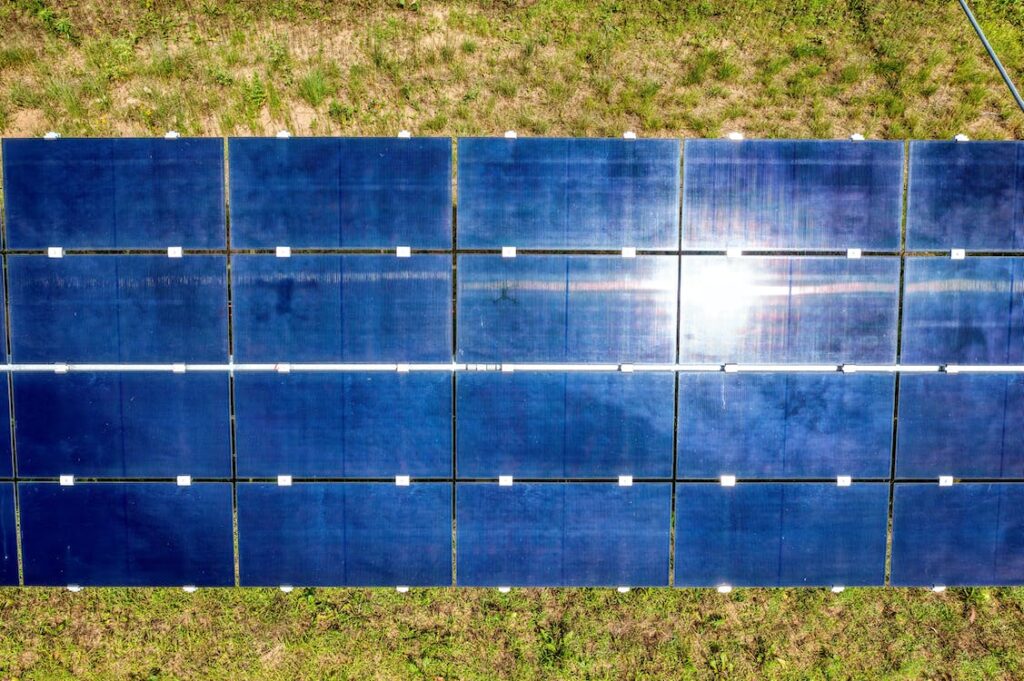
2025 Solar Energy Guide for India – Costs, Incentives, and Business Opportunities

The solar energy industry in 2025 is more dynamic than ever. With innovations in technology, government policies, and growing concerns about sustainability, solar power has shifted from being an alternative option to a mainstream energy source.
This ultimate FAQ guide answers the most common questions about solar panels, their cost, technology, market outlook, recycling, and environmental impact, giving you an up-to-date perspective on where solar stands today.
Table of Contents
We selected these questions by surveying hundreds of people interested in these topics, and most of these topics are repeated questions or doubts asked by the majority of people.
Whether you are a homeowner, a business owner, or simply interested in the future of energy, this article will provide a comprehensive overview of all about solar.
1. What are solar panels and how do they work?
Solar panels, also called photovoltaic (PV) modules, convert sunlight into electricity using semiconductor materials such as silicon. When sunlight hits the panel, photons excite electrons in the silicon, creating an electric current.

In 2025, efficiency has seen a huge leap. Standard panels now reach 22–24% efficiency, while advanced designs like heterojunction (HJT), TOPCon, and back-contact (IBC) cells push closer to 25%. Research into tandem solar cells (combining silicon and perovskite) has already crossed 33% in labs. This means smaller rooftops can now generate far more electricity than a decade ago.
2. What types of solar panels are available in 2025?
Today’s market offers several types of panels suited to different needs:
- Monocrystalline panels – High efficiency (20–25%), long lifespan, widely used for homes and businesses.
- Bifacial panels – Capture light from both front and back, improving output by up to 30%.
- Polycrystalline panels – Still used in some installations but fading due to lower efficiency (~18–20%).
- Perovskite and tandem cells – Lightweight, flexible, and potentially revolutionary with 30%+ efficiency potential.
For homeowners, monocrystalline and bifacial remain the most practical choices, while perovskite cells are emerging in research and niche markets like solar windows and portable power.
3. How much do solar panels cost in 2025?
Solar costs depend on system size, region, and installation type. In the US, residential solar averages $2.80–$3.80 per watt. That means:
| System size | Average cost (USD) |
|---|---|
| 5 kW | $14,000 |
| 6 kW | $16,800–$22,800 |
| 10 kW | $30,000–$38,000 |
In India, costs are significantly lower, averaging ₹45,000–₹65,000 per kW for rooftop installations. Government incentives under the PM Surya Ghar scheme reduce this further.
However, homeowners should note that the US federal solar tax credit ends in 2025, which could raise upfront costs by ~30% starting in 2026.
Maintenance remains minimal mostly cleaning and occasional inspections. Panels typically carry 25-year performance warranties.
4. Is investing in solar panels worth it?
Yes. Solar panels can cut or even eliminate electricity bills. Average savings are $1,200–$1,500 per year for homes in the US, with payback periods of 5–10 years depending on electricity rates and incentives.

In India, where residential tariffs are lower but solar costs are also lower, payback periods average 4–7 years in urban centers. Beyond financial benefits, solar reduces reliance on the grid and provides resilience against rising energy costs.
5. What is the global solar energy market outlook?
The solar market is scaling rapidly:
- Valued at $296.7 billion in 2025.
- Projected to reach $1.15 trillion by 2034 with a CAGR of 16.2%.
- Asia-Pacific leads growth, with China and India dominating installations.
- Global PV installations in 2025 are expected to exceed 655 GW of new capacity.
India, targeting 450 GW of renewable energy by 2030, is one of the fastest-growing solar markets. Policies like PLI schemes for solar manufacturing are pushing domestic companies into global competition.
6. How about solar panel recycling and waste management?
With panels lasting 25–30 years, the first wave of large-scale solar waste is emerging. By 2030, millions of tons of discarded panels will require recycling.
Today, only about 10% of panels are recycled. The global recycling market was valued at $322.9 million in 2024 and is expected to double by 2030.
Technologies now recover valuable materials like silicon, aluminium, and silver, reducing demand for virgin mining. The EU, India, and China have introduced regulations requiring recycling, a crucial step toward a circular solar economy.
7. Which companies lead the solar industry in 2025?
Global solar manufacturing is dominated by Chinese companies, but Indian players are growing:
| Company | Country | 2024 Shipments | Technology focus |
|---|---|---|---|
| JinkoSolar | China | 47.2 GW | PERC, bifacial |
| JA Solar | China | 38 GW | Back-contact |
| LONGi Solar | China | ~40 GW | Monocrystalline, TOPCon |
| Rayzon Solar | India | 6 GW capacity | Monocrystalline, bifacial |
| Waaree | India | Expanding | Monocrystalline |
Indian firms like Tata Power Solar and Waaree are not just catching up but also supplying both domestic and international markets.
8. What are the latest solar technology trends?
Solar in 2025 is defined by rapid tech shifts:
- Bifacial dominance – More rooftops are adopting bifacial panels for higher returns.
- Perovskite tandem cells – Pushing efficiency beyond silicon limits.
- AI and IoT integration – Smart monitoring, predictive maintenance, and optimized energy use.
- Flexible solar – Lightweight films for urban use, EVs, and portable power.
- N-type silicon expansion – Higher durability and better efficiency.
These innovations mean solar is not just cheaper but also smarter and more adaptable.
9. What are the main challenges for solar adoption?
Despite rapid growth, solar adoption still faces hurdles. The high upfront cost of solar systems remains a barrier, especially in developing countries where financing is limited. Utility-scale projects require large tracts of land, which can lead to conflicts over agriculture and biodiversity. Global supply chain disruptions particularly around polysilicon and rare earth materials have also created price volatility.

Another major challenge is the lack of robust recycling infrastructure for aging solar panels, which will become a growing concern as millions of early installations reach end of life by the 2030s.
10. What is the environmental impact of solar panel manufacturing?
Like all industrial processes, solar panel production has an environmental carbon footprint. Manufacturing involves energy-intensive processes and materials such as silicon, silver, and aluminum.
However, when viewed over the entire lifecycle, solar panels emit around 20–40 grams of CO₂ per kilowatt-hour, compared to more than 800 grams for coal power. That means solar cuts emissions by over 90% compared to fossil fuels.
The challenge lies in reducing emissions from production and scaling up recycling of valuable materials. Progress is being made, with several manufacturers shifting to renewable-powered factories and closed-loop recycling technologies.
11. Are solar panels suitable for rural or off-grid areas?
Absolutely. In fact, solar is one of the most transformative technologies for rural electrification. Paired with batteries, it enables off-grid villages in Africa, South Asia, and Latin America to access reliable electricity for the first time.
In India, decentralized solar microgrids have been deployed in remote communities, powering schools, small businesses, and agricultural operations. Off-grid solar is not only cheaper than extending traditional grid infrastructure in remote regions, but it also improves quality of life and supports local economic growth.
12. What financing options exist for solar in 2025?
The growth of financing models has been key to solar’s accessibility. In many markets, consumers and businesses can choose between loans, leases, and power purchase agreements (PPAs) where the system is owned by a third party and electricity is sold at a fixed rate.
Community solar programs also allow households without rooftops to buy shares in a shared solar farm and offset their bills. Green banks and fintech platforms are expanding solar financing in developing countries, offering pay-as-you-go solar kits to households that cannot afford large upfront investments.
13. Is starting a solar panel business profitable in 2025?
Yes, but profitability depends on scale and strategy. The global solar market is projected to reach over $1 trillion by 2034, driven by falling costs and ambitious national renewable targets.

Government subsidies, carbon markets, and corporate demand for clean energy create strong business opportunities. However, competition is intense, especially in panel manufacturing where Chinese firms dominate.
Entrepreneurs find more accessible opportunities in local installation, EPC services, and solar financing solutions. The key to profitability is offering value-added services like maintenance, storage integration, or community-based models.
14. What business models work best for solar companies?
The solar industry is highly diverse. Some companies focus on manufacturing panels and components, while others specialize in EPC (engineering, procurement, and construction) services for large projects.
Rooftop installers and solar farm developers often operate under PPA contracts with utilities and corporations.
Financing and leasing models are another big area, with firms providing capital so customers can adopt solar with little or no upfront payment.
Each model requires different levels of investment and expertise, but all benefit from rising global demand for clean energy.
Some business models that are proving successful:
- Rooftop Solar Installers for residential/commercial clients – often combined with net metering.
- Solar EPC providers for utility scale or larger commercial projects.
- Module and cell manufacturing – especially under government push for local manufacturing.
- Operations & Maintenance (O&M) and AMCs – recurring revenue and lower risk.
- Solar financing/leasing models – enabling customers who can’t afford upfront cost to pay over time.
15. How much investment is needed to start a solar business in India?
The required capital varies widely depending on the business model. A small rooftop solar installation company in India might need ₹20–50 lakh to cover equipment, training, and initial projects.
In contrast, setting up a solar panel manufacturing unit requires investment in the range of hundreds of crores due to the need for advanced machinery and supply chain integration.
Globally, solar EPC and service businesses tend to be more affordable to start compared to manufacturing or utility-scale solar farms.
16. What government policies support solar businesses?
Policy remains central to solar’s success. India has launched the Production Linked Incentive (PLI) scheme to encourage domestic solar manufacturing.
In the US, the Inflation Reduction Act provides billions in subsidies for renewable projects, including tax credits for manufacturing and deployment.

Europe continues to expand renewable investment under the Green Deal Industrial Plan, prioritizing solar as a strategic technology.
These policies are designed not just to accelerate adoption, but also to strengthen local supply chains and reduce dependency on imports.
17. What’s the future of solar franchising and dealership models?
Franchising and dealership networks are expanding, particularly in India and Africa, where smaller entrepreneurs can partner with larger solar brands to reach new markets.
These models lower the barrier for entry by providing training, marketing, and supply chain support, while ensuring standardized quality.
Dealerships also help accelerate rural adoption by building localized networks that make solar products more accessible to everyday consumers.
18. Can solar businesses tap into carbon credit markets?
Yes. Solar projects generate carbon credits by displacing fossil fuel emissions, and these credits can be traded on both voluntary and compliance markets.

For businesses, this creates an additional revenue stream beyond electricity sales. With the rise of decentralized carbon markets and blockchain verification systems, even small and medium-sized solar firms can now access carbon credit trading.
This integration strengthens the financial case for solar projects while contributing to global climate goals.
Practical Questions About Solar Panels
Do solar panels work at night?
No. They only generate electricity during the day. To use solar power at night, you need battery storage (like the Tesla Powerwall) or a grid connection.
Do shading and dirt affect panels?
Yes. Even partial shading can reduce output significantly. Regular cleaning improves efficiency.
How long do panels last?
Most panels last 25–30 years, retaining 80–90% output after 25 years under warranty.
The solar industry in 2025 is no longer just about cutting energy bills, it’s about building a sustainable energy future. With costs falling, technologies advancing, and recycling gaining ground, solar panels are an investment in both financial savings and environmental impact.
For homeowners, businesses, and sustainable startups, the opportunities in solar go beyond electricity generation. They signal participation in one of the world’s fastest-growing industries and a critical step toward global climate goals.








